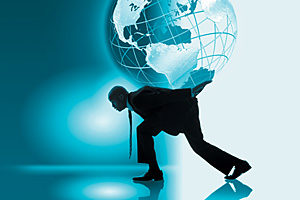Back Pain
- Home
- Back Pain
1) Lower Back Pain Your Workplace & Quality Of Life
2) Back Pain Is #1 Cause of Disability Worldwide
3) 1 in 6 Australians have chronic back problems
Yes … we can help You … all types of Back Pain 🙂
Back Pain covers an area from the mid back (Bra Area) down to your bottom. It can be sharp, dull, intense, knife like, pins and needles, numb, burning, on fire, excruciating. Back pain can be local, at certain times, comes and goes and can spread to your legs, feet, tummy, flanks, chest and upper back. All back pain is caused from the same thing. Compression, kinking, stretching or Pinching of 1 or more nerves in one or more places along the path of those nerves. Nerves are like your water hoses:- they can be stretched, kinked, bent, compressed, twisted and misaligned. Nerves “like a hose can be caught along the line at numerous points if pulled around the yard, when you flick your end to undo a kink, the other caught spot makes their kink worse, the result is the water blocks or slows” like a nerve blocks, “and the garden hose loss of flow causes the flower, veggie and herb garden to wilt and suffer”. And so does your back wilt, slow, jam. We work to undo it. Back pain Symptoms usually start six weeks after a strain or injury that progressively gets worse until loss of flow reaches 50% and pain ‘suddenly appears’.
Lower Back Pain Your Workplace & Quality Of Life
It is commonly accepted among experts that lower back pain is related to prolonged sitting. Let’s face it, as a nation we spend plenty of time during our day doing that, from www.choosenatural.com 13 March 2017.
- We sit in the car
- We sit most of the day at work
- We sit watching television after our workday
It seems that the only time we are not sitting is when we’re moving from one location to the next. It should come as no surprise that back pain is a pretty common problem. The cause is a pinch, irritation, stretch or upset of your nerve’s telling you, you have created a problem. If you leave it, it always gets worse over time. A pain killer stops you feeling the pinch, but it doesn’t change the cause of the pinched nerves, in fact it gets worse.
I’m not suggesting that we stop sitting; what we should do is take some simple steps to minimize the impact by making our environment more back friendly.
Here are some suggestions:
- Take interval breaks throughout your day
- Change your position as often as you sensibly can
- Get up and walk every at least 55 min
- Try leaning back in your chair when you can, best chair is a kitchen chair or grandpa’s chair (kitchen chair with arms)
- Stretch your spine throughout the day (>2 hours the disc compresses)
- Don’t sit on chairs with wheels when they move so does your disc
- Have narrow desks to reduce reach
- Get adjusted to mobilize the joint fixation, pinched nerves and other upsets.
Dr Steven Griffith (added bits) from Redcliffe Family Chiropractor has helped people live without pinched nerves & happier lives for over 30 years.
Back Pain Is #1 Cause of Disability Worldwide
Global Burden of Disease 2010 highlights the pressing need to prevent, treat spinal and musculoskeletal disorders. News release June 5, 2013
A series of studies emerging from the Global Burden of Disease 2010 Project, a massive collaboration between the World Health Organization, the Institute for Health Metrics and Evaluation (the coordinating centre), the University of Queensland School of Population Health, Harvard School of Public Health, Johns Hopkins Bloomberg School of Public Health, and the University of Tokyo, Imperial College London, clarifies the worldwide health burden of musculoskeletal conditions, particularly back and neck pain, in crystal-clear fashion, with low back pain identified as the number-one cause of disability worldwide and neck pain the number-four cause. Overall, musculoskeletal conditions represent the second leading cause of global disability.
Findings emphasize the shift in global health that has resulted from disability making an increasingly larger footprint on the burden of disease compared to a mere 20-30 years ago. In addition, while more people are living longer, the flip side is that they do so with an increasing risk of living with the burden of pain, disability and disease compared to generations past.
 Dr Steven Griffith, 41 Scarborough Rd Redcliffe QLD, successfully treats chronic neck and back pain provides an analysis of the Global Burden of Disease 2010 findings, highlighted as follows:
Dr Steven Griffith, 41 Scarborough Rd Redcliffe QLD, successfully treats chronic neck and back pain provides an analysis of the Global Burden of Disease 2010 findings, highlighted as follows:
- Musculoskeletal conditions such as low back pain, neck pain and arthritis affect more than 1.7 billion people worldwide and have a greater impact on the health of the world population (death and disability) than HIV/AIDS, tropical diseases including malaria, the forces of war and nature, and all neurological conditions combined.
- When considering death and disability in the health equation, musculoskeletal disorders cause 21.3 percent of all years lived with disability (YLDs), second only to mental and behavioural disorders, which account for 22.7 percent of YLDs.
- Musculoskeletal conditions represent the sixth leading cause of death and disability, with only cardiovascular and circulatory diseases, neonatal diseases, neoplasms, and mental and behavioural disorders accounting for more death and disability worldwide.
- Low back pain is the most dominant musculoskeletal condition, accounting for nearly one-half of all musculoskeletal YLDs. Neck pain accounts for one-fifth of musculoskeletal YLDs.
- Low back pain is the sixth most important contributor to the global disease burden (death and disability), and has a greater impact on global health than malaria, preterm birth complications, COPD, tuberculosis, diabetes or lung cancer.
- When combined with neck pain (21st most important contributor to the global disease burden including death and disability), painful spinal disorders are second only to ischemic heart disease in terms of their impact on the global burden of disease. Spinal disorders have a greater impact than HIV/AIDS, malaria, lower respiratory infections, stroke, breast and lung cancer combined, Alzheimer’s disease, diabetes, depression or traffic injuries.
- Current estimates suggest that 632.045 million people worldwide suffer from low back pain and 332.049 million people worldwide suffer from neck pain.
Call Today: 045699010 to make your next appointment life-changing…
1 in 6 Australians have chronic back problems
Australian Government: – Australian Institute of Health & Welfare www.aihw.gov.au
An estimated 3.7 million Australians had chronic back problems in 2014–15, according to a report released by the Australian Institute for Health and Welfare (AIHW).
The report, Impacts of chronic back problems, explains the impact on an individual’s quality of life, as well as the impact on the community in terms of economic and disease burden.
Chronic back problems are defined as long-term (6 months or more) health conditions and include disc disorders (such as a herniated disc or disc degeneration); sciatica and curvature of the spine; and pain not caused by another condition such as osteoporosis or osteoarthritis.
People with chronic back problems are more likely to report a poorer quality of life than those in the general population, with similar rates for men and women.
‘People with back problems are around 2 times as likely to say they have poor health, high levels of psychological distress and severe bodily pain, compared with the general population,’ said AIHW spokesperson Ann Hunt.
In 2014–15, around 9% of people with back problems perceived their health as poor, compared to just over 4% in the general population.
‘Almost 7% experienced very high levels of psychological distress, and 4% experienced very severe bodily pain. This is compared with 4% and 1.5%, respectively, in the general population,’ Ms Hunt said.
The report also shows that 28% of people with a disability (around 1.2 million people) also had a chronic back problem.
‘Among people with a disability, those suffering from chronic back problems were more likely than those without to report limitations and restrictions in relation to mobility, self-care, employment and social participation,’ Ms Hunt said.
‘Among people with both a disability and a chronic back problem, 43% experienced limitations related to mobility, 28% experienced limitations related to self-care, and 77% of those who were working age experienced a restriction in employment.’
Chronic back problems were the third leading cause of disease burden in Australia in 2011, accounting for 3.6% of the total burden across all diseases and injuries. The majority (78%) of people with chronic back problems are aged between 15–64.
Canberra, 16 August 2016
Further information: Ms Ann Hunt, AIHW, tel. 02 6244 1238. mob. 0407 915 851
Full publication: Impacts of chronic back problems
https://redcliffewellness.com/proargi9-synergy/
https://redcliffewellness.com/heart-disease/
https://redcliffewellness.com/help-thyroid/

